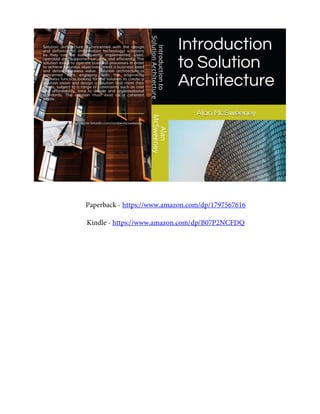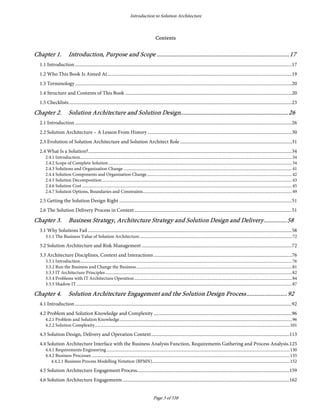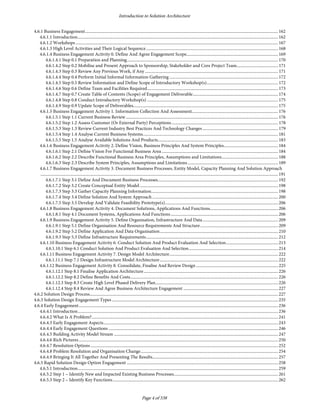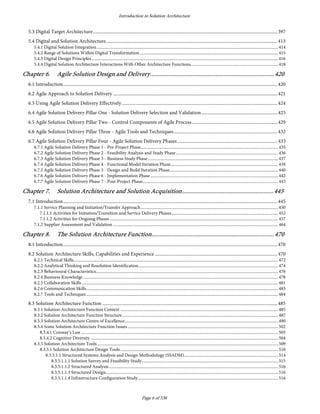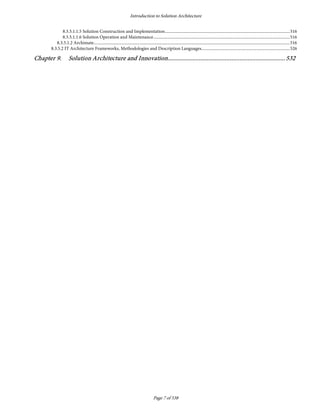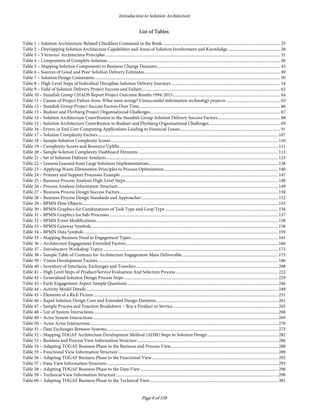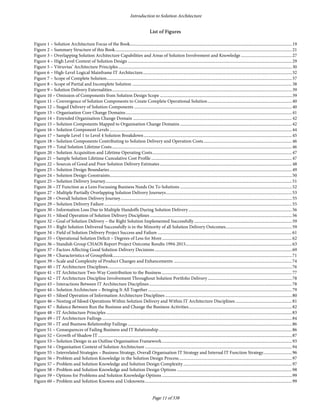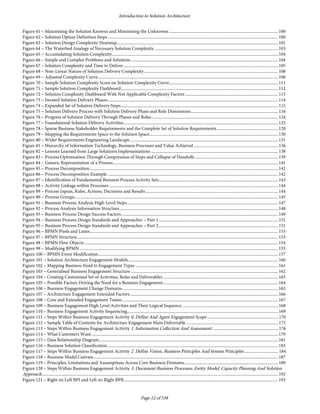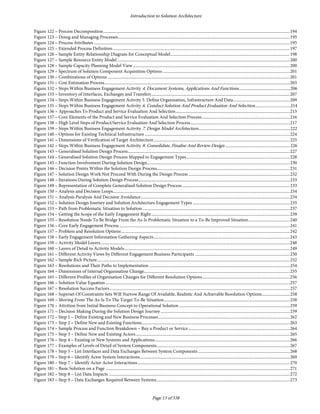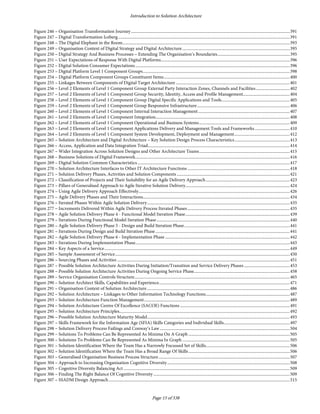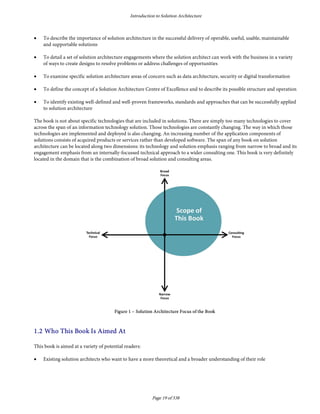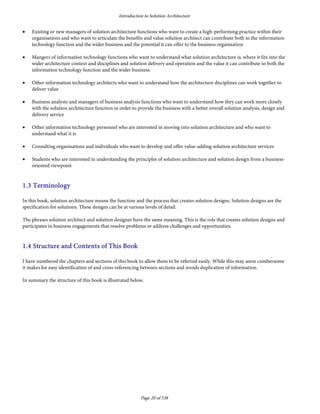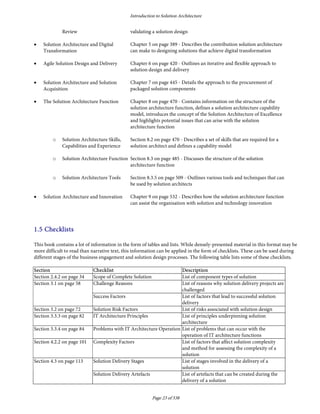This document is an excerpt from the book "Introduction to Solution Architecture" which discusses solution architecture and the solution design process. It includes a table of contents showing the chapters and sections that will be covered, such as introducing solution architecture, what constitutes a solution, and the relationship between business strategy and solution architecture. It also discusses how solution architecture interfaces with business analysis and requirements gathering. The excerpt provides an overview of the topics that will be explored in the book at a high-level.
